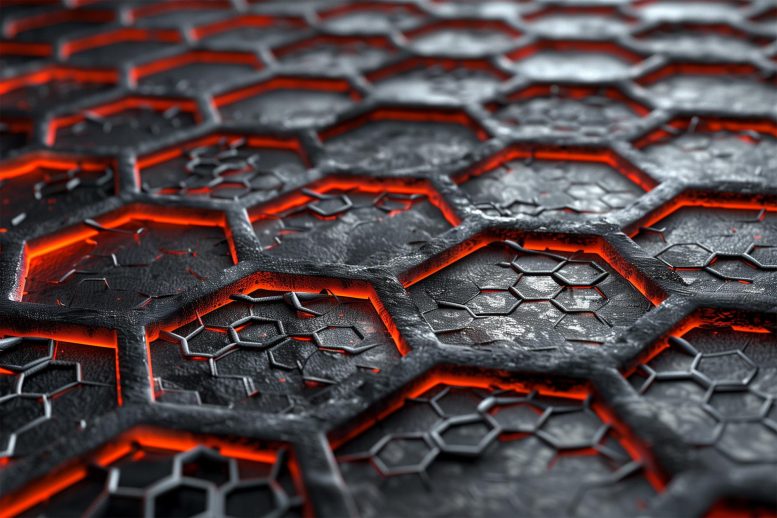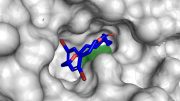
Recent research indicates that controlled inhalation of ultra-pure graphene oxide does not have short-term adverse effects on human lung or cardiovascular health, marking a significant step in safely harnessing graphene’s potential for various applications. Credit: SciTechDaily.com
A revolutionary nanomaterial with huge potential to tackle multiple global challenges could be developed further without acute risk to human health, research suggests.
A revolutionary nanomaterial with huge potential to tackle multiple global challenges could be developed further without acute risk to human health, research suggests.
Carefully controlled inhalation of a specific type of graphene – the world’s thinnest, super strong, and super flexible material – has no short-term adverse effects on lung or cardiovascular function, the study shows.
Clinical Trial Insights
The first controlled exposure clinical trial in people was carried out using thin, ultra-pure graphene oxide – a water-compatible form of the material.
Researchers say further work is needed to find out whether higher doses of this graphene oxide material or other forms of graphene would have a different effect.
The team is also keen to establish whether longer exposure to the material, which is thousands of times thinner than a human hair, would carry additional health risks.
There has been a surge of interest in developing graphene – a material first isolated by scientists in 2004 and which has been hailed as a ‘wonder’ material. Possible applications include electronics, phone screens, clothing, paints, and water purification.
Graphene is actively being explored around the world to assist with targeted therapeutics against cancer and other health conditions, and also in the form of implantable devices and sensors. Before medical use, however, all nanomaterials need to be tested for any potential adverse effects.
Study Methodology and Findings
Researchers from the Universities of Edinburgh and Manchester recruited 14 volunteers to take part in the study under carefully controlled exposure and clinical monitoring conditions.
The volunteers breathed the material through a face mask for two hours while cycling in a purpose-designed mobile exposure chamber brought to Edinburgh from the National Public Health Institute in the Netherlands.
Effects on lung function, blood pressure, blood clotting, and inflammation in the blood were measured – before the exposure and at two-hour intervals. A few weeks later, the volunteers were asked to return to the clinic for repeated controlled exposures to a different size of graphene oxide, or clean air for comparison.
There were no adverse effects on lung function, blood pressure, or the majority of other biological parameters looked at.
Researchers noticed a slight suggestion that inhalation of the material may influence the way the blood clots, but they stressed this effect was very small.
Conclusions and Future Directions
Dr. Mark Miller, of the University of Edinburgh’s Centre for Cardiovascular Science, said: “Nanomaterials such as graphene hold such great promise, but we must ensure they are manufactured in a way that is safe before they can be used more widely in our lives.
“Being able to explore the safety of this unique material in human volunteers is a huge step forward in our understanding of how graphene could affect the body. With careful design, we can safely make the most of nanotechnology.”
Professor Kostas Kostarelos, of the University of Manchester and the Catalan Institute of Nanoscience and Nanotechnology (ICN2) in Barcelona, said: “This is the first-ever controlled study involving healthy people to demonstrate that very pure forms of graphene oxide – of a specific size distribution and surface character – can be further developed in a way that would minimize the risk to human health.
“It has taken us more than 10 years to develop the knowledge to carry out this research, from a materials and biological science point of view, but also from the clinical capacity to carry out such controlled studies safely by assembling some of the world’s leading experts in this field.”
Professor Bryan Williams, Chief Scientific and Medical Officer at the British Heart Foundation, said: “The discovery that this type of graphene can be developed safely, with minimal short-term side effects, could open the door to the development of new devices, treatment innovations and monitoring techniques.
“We look forward to seeing larger studies over a longer timeframe to better understand how we can safely use nanomaterials like graphene to make leaps in delivering lifesaving drugs to patients.”
Reference: “First-in-human controlled inhalation of thin graphene oxide nanosheets to study acute cardiorespiratory responses” by Jack P. M. Andrews, Shruti S. Joshi, Evangelos Tzolos, Maaz B. Syed, Hayley Cuthbert, Livia E. Crica, Neus Lozano, Emmanuel Okwelogu, Jennifer B. Raftis, Lorraine Bruce, Craig A. Poland, Rodger Duffin, Paul H. B. Fokkens, A. John F. Boere, Daan L. A. C. Leseman, Ian L. Megson, Phil D. Whitfield, Kerstin Ziegler, Seshu Tammireddy, Marilena Hadjidemetriou, Cyrill Bussy, Flemming R. Cassee, David E. Newby, Kostas Kostarelos and Mark R. Miller, 16 February 2024, Nature Nanotechnology.
DOI: 10.1038/s41565-023-01572-3
It was funded by the British Heart Foundation and the UKRI EPSRC.








Inhaling foreign man made objects into our lungs, yeah this will end well SMH
Just to be clear the study was only short term so calling this safe is misleading at best.
Also this was casually mentioned but I guess its not a “concern”:
Researchers noticed a slight suggestion that inhalation of the material may influence the way the blood clots, but they stressed this effect was very small.
As someone whos had a DVT and resulting PE from it I dont care how small the effect is that is not a risk I’m willing to take.
Lets come back in 10 years and see how many adverse health conditions develop in the suckers breathing this crap in.
Typo correction:
As someone whos had DVT and resulting PE from a blood clot I dont care how small the effect is that is not a risk I’m willing to take.
Graphene has other names & has been around for longer than I’ve been alive. It is a marker used in the so-called corona virus vaccine, along with mercury a known deadly toxin.
Graphene holds much promise, but not on humans.
GO just now. Seems okay! Points for our null hypothesis friend; it’s not a cure-all yet. Sorta rather there were longish studies with katydids or mantises or field mice huffing the stuff, sometimes getting superpowers, but some humans got paid! Yay!
…researchers after testing on humans are still trying to figure out the point of inhaling this graphene apart from it being great way to cause sudden unexpected death.
This website should be ashamed of itself, but it’s not…The author is just another globalist bootlicker
Yep